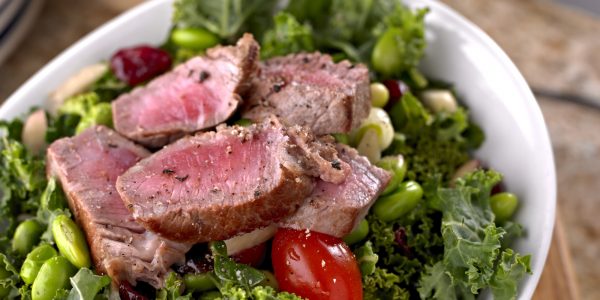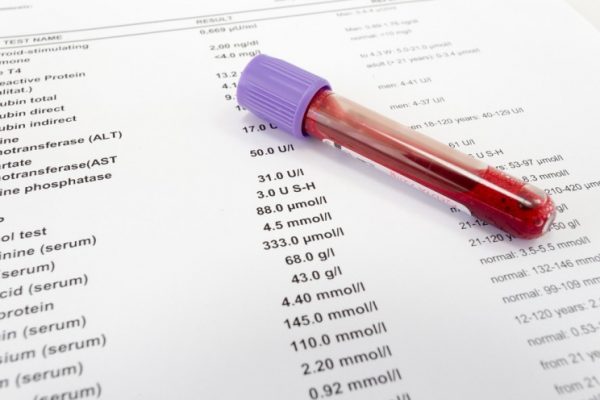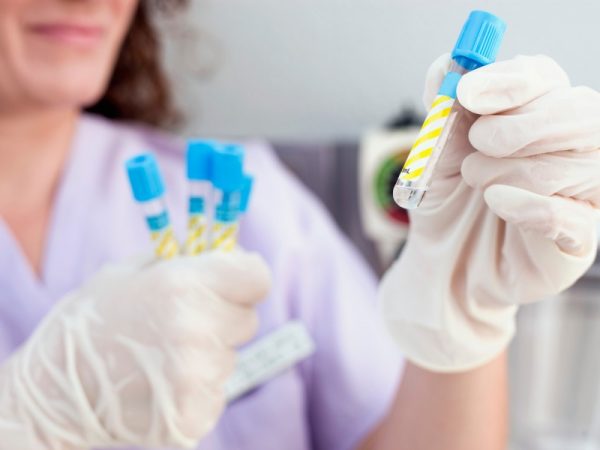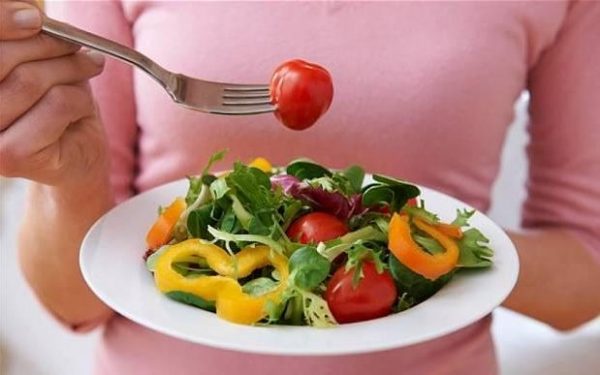
By Dr. Justin Marchegiani
Today we'll talk about the major lab tests you need to do if you're starting with a poor diet or you're transitioning over from a Paleo diet. What are the lab tests you need to be doing to quantify your success? Also if you hit a roadblock, what could be those underlying barriers that are preventing you from getting to the next level and experiencing a lot of the success and results many people are talking about when they transition to one of these types of Paleo style diets?
So again top three labs, so we're going to review these different labs. So starting off, what is the Paleo diet? I don't like the word diet so I'm gonna just cut that out right now and I like the word template instead. Template gives us freedom. It gives us flexibility. I’ve talked about this multiple times. Template gives us the ability to adjust our macronutrients which are proteins, fats and carbs—PFC—so then we can adjust it to according to our energy levels and our metabolic needs. Some patients are insulin-resistant and have blood sugar issues and they may really do well on a ketogenic style of Paleo diet. Some people are more CrossFitters. They may already be pretty healthy. They may already pretty insulin-sensitive, meaning their body is able to process and handle blood sugar and insulin normally, and they could be maybe handle a little more carbs and maybe their activity levels at that level where they can do that. So when we talk about a Paleo diet, really what we’re talking about is anti-inflammatory, nutrient-dense, low toxin foods—foods that we've had enough time to evolutionarily adapt to. The Paleo era started about two million years ago, plus or minus. We started developing fire about 1.9 million years ago and then started developing tools to be able to access the animal’s brains where we got certain nutrients and amino acids. Hand axes where we can actually break into the bone and get the bone marrow, and this really allowed for a significant improvement in our neofrontal cortex to evolve and then from there, we were able to create tools and be able to attack and be more hunter-gatherer type of style of hunters and we were able to access animals from afar. Because if you were close up with an animal with a spear, great chance of you getting injured or dying. When you could have a bow and arrow or spear from far away, you improve your chance of surviving and accessing nutrients to grow that brain.

So off the bat, we talk about the anti-inflammatory, the low toxin, the nutrient density, and the evolutionary adaptation. And we have a template here, we can adjust our protein, fat, and carbs—PFC—according to our needs. And overall though, we should see going pre-Paleo, right? Maybe a standard American diet, maybe a lot of grains, maybe a lot of refined sugar to post-Paleo where we’re really one month, two months in, we're having a significant benefit whether its energy, whether it’s inflammation, whether it’s joint pain, whether it’s less brain fog.
We should see these and I'm gonna go over a couple of markers here that we should be seeing on our blood labs improving in the right direction, so it gives us an objective quantification along with subjectively how we feel. We’re feeling better while at the same time we can go to our friends and family and say, “Hey, look! Look, things are improving with our lipids, with our inflammation markers, with our blood sugar markers,” and just a couple little things on the evolutionary adaptation—grains were only started to be consumed about 10,000 years ago. So if you look at the start of the Paleo era about 1.8, 1.9, 2 million years ago, plus very small percent of that, we've been consuming grains. We’ve evolved from hunter-gatherer societies where we’re eating lots of meat, getting access to bone marrow, getting access to starchy tubers, foraging and gathering certain carbohydrates as well that typically were not grain-based, and a lot of the agrarian societies when they looked deeper, they found they had more osteoporosis and smaller stature and bone size. So again grains for most people are going to be highly problematic because we just haven't had enough time to evolve and adapt to those things. Some people can handle it better than others, but in my impression anyone that’s sick or inflamed, grains are going to be people's kryptonite, FYI.

So let’s go dig into some of the lab work. So when I run lab work on my patients, most patients I see have already kind of stepped into the Paleo realm before they’ve seen me and they're down here. They're still sick. They’re at these roadblock areas, but people that have not gone Paleo yet, there’s a couple things we like to see improved.
Number one, inflammation. Inflammation—it’s just a sign that your body is breaking down faster than you’re building up because of some type of physical, chemical, and emotional stressor. Now when we talk about diet, gluten’s a big inflammatory compound, not getting enough sleep, doing too much exercise, getting exposed to various toxins, hidden infections, having blood sugar and excessive carbohydrate inflammatory foods like grain at higher level. So when we cut these things out and we go Paleo and go grain-free and we put an emphasis on food quality, meaning we cut out the pesticides and the chemicals and herbicides and the rodenticides and the fungicides, which have only been around for forty to eighty years—so grains have been around for 10,000, herbicides and pesticides for 40 to 80 years, and flower only for 200 years. So when you look at that timeline, you can see organic food—people think it's a fad thing, but if you look at it outside of 50 or 60 years ago, everything was organic. There was no way you could not consume and buy an organic food. So a lot of times these things have labels now and we think of them as a fad. Oh, it's organic, but outside of 50 years ago, everything was organic. So organic foods have really have only been, you know, had been here up until the 1940s and 50s, and then up from there, the pesticide and the GMO industry has started. GMOs, the last 20-30 years. Pesticides, the last 40-60 years. So you can see cutting out toxic food are gonna significantly help improve inflammatory markers. We’d like to see things like CRP below 1 on our conventional blood tests. We like homocysteine, which is an inflammatory marker—it’s a good sign of vascular integrity and vascular inflammation—we like to see that below 8, below 7-1/2 to 8. Again things like B vitamins, folate, B12, B6 can have a big effect on homocysteine. Inability to methylate. Methylation is important for detoxification, for brain health, for our mitochondria. Impairments in methylation can cause increased levels of homocysteine. If we have gut absorption issues, right? Inflammation in the gut that affects B12 which can also affect homocysteine. Fibrinogen is also something that’s important. The more inflamed we are, the more cells stick together. So it's kinda like you go out and you get sweaty, and when you get sweaty, your shirt kind of sticks to you. Well, the sweat that you perspire when you're exercising or moving on a hot day is like when your body's inflamed, things get really sticky to it and cells get sticky, the more sticky cells get, the more there could be an occlusion or a blockage in various arterials that can cut off oxygen and create the cells or make the cells die, and this is what happens with elevations in fibrinogen. This is nothing more than looking at clotting factor. So the healthier and less inflamed we are, the more smoother our blood flows, the less chance of blockages and heart attacks and strokes which is a really good thing, one of the great benefits of going Paleo.
Blood sugar markers, I already mentioned most people are overweight—60% of people are overweight—I should say 60-70% of people are obese or overweight, and then obesity is like the next 40-50%. So typically a BMI of 25, obesity is 30 or above. But you can see here, blood sugar markers, A1c, this is a 90-day window of how our blood sugar fluctuates. Now in Paleo realm because our blood cells get actually healthier because they’re exposed to less toxins, we can see people with maybe slightly high A1c’s, 5.6-5.7, that may still be eating really healthy, primarily eating vegetables may be a little bit of low sugar fruit, so A1c isn’t the be all or end all, but just keep an eye on it. Most people, they go Paleo, see an improvement but some don't. People that are anemic have very, very low A1c’s no matter what their diet is. So A1c is one picture of the puzzle.
Also fasting insulin. Fasting insulin is a marker of basically a hormone that comes out. It basically opens the door for blood sugar to come into the cell and essentially the more we spit out sugar, the more we spit out insulin, the more numb to insulin we get, that’s called insulin resistance. So the more numb we get, meaning the higher amount of insulin our body, that stimulates cell growth, ideally fat cell growth and sometimes even tumors, right? There’s a strong relationship between high levels of insulin and tumors and cancer. So we also see it in PCOS as well. We also see it in a lot of hormonal disorders like elevations in testosterone and androgens for women. So fasting insulin’s a big one. We like it ideally below 5 in our patients. That's a really good sign, that means our body is very sensitive to sugar and it's more likely to take that sugar into the muscle and be able to burn it versus shoot it over into the fat and store it. So when we have—or more sensitive to insulin, we make less fat and we burn our sugar for fuel. The more resistant we are—insulin-resistant, the more we’re likely to shuttle that sugar into the fat cell or into our liver to be stored as fat, ideally converted to palmitic acid. And then we have glucose over here, a fasting glucose below a 100 is ideal, some even say below 95 or even 90, again depending on our stress levels and our cortisol levels, glucose can go higher because cortisol can increase glucose. It may not necessarily be a bad thing if you have a healthy stress response in the morning but insulin—fasting insulin levels will probably be a better marker and we can even do what’s called a functional glucose tolerance. We can take our regular meal and we could measure one to three hours after and see how we do in those various intervals, ideally below 140 within an hour, 120 within two, and back below 100 within three hours is a pretty good measurement.

And then lipid markers, so our triglyceride to HDL ratio is a really good marker of insulin resistance. So basically our triglycerides go high when we consume too much carbohydrate. Our HDL’s go up when we're consuming really good healthy quality fats like fish oils and good clean saturated fats like coconut oil and butter. So is HDLs go up and triglycerides come down because we're not consuming excess sugar, that's a really good ratio. Ideally we like a 1:1 or so, but I'll settle for a 2:1 ratio so that’s like your triglycerides being at a hundred and your HDL being at 50, and if we can even get the trigs to 75 and get the HDL to 60, we’re even in a better place. Total cholesterol to HDL, I mean we like that around between 3 and 4 is a pretty good place, so if our cholesterol and our HDL is at 60, you know, keeping your total cholesterol under 240 would be pretty good. Total cholesterol by itself is not that important when we look at inflammation markers like CRP and homocysteine and fibrinogen. If inflammation levels are low, but cholesterol’s on the higher side, 250-260, it may not necessarily be a bad thing especially if we see something called LDL particle size, right? Particle size, the bigger—the bigger our particle size, right? That's particle size A. A is good. A is good, okay? And then B is bad. So B for bad and this is small, and then A is large. So the larger and fluffy and more buoyant our particle size are, the bigger it is, the less likely it’s going to stick into the endothelial fissures and create various blockages and occlusions. So we want less small and more large, and we're going to get that with the healthy fats and restricting a lot of the refined sugars and carbohydrates and grains and inflammatory foods. So again, lipids are important, I’m more—it’s more important for me to look at the ratios especially Trig to HDL as well as Total Cholesterol to HDL, but we also have to look at that in conjunction with fasting insulin and our inflammatory markers. So you can see, it’s not just looking at Total Cholesterol by itself, we’re looking at the various ratios, too. And even after that, we can also look deeper at things like thyroid because that can even be a deeper story to what's going on.
So off the bat, we review what the Paleo diet is. We talked about the inflammation levels, the toxicity, the nutrient density, the evolutionary adaptation. We review the fact that grains have only been around for 10,000 years, flower for 200 years, and pesticides for 40 to 60 years, and GMOs from only 20 to 30 years. So you can see we're trying to avoid foods that we had less time to adapt to and eat food that we've had more time to adapt to that are going to be low in toxicity, drive less inflammation, and essentially have higher levels of nutrient density. Anything you can get in vegetables and meat and low sugar berries and starchy tubers, you're gonna be able to get every single nutrient those food items then you would in grains and other refined products. So keep that in mind. People say, “Well, you can't cut out a food group,” well, you got to just forget the food group, look at what the nutrients you're trying to get from that food group are and say, “Can I get that from something else?” And if you can get that from another area without taking on the inflammatory compounds in the lectins and the phytates and the oxalates like you get with the gluten, then that's a win-win in my book.

So again, this video is going a bit long. So I'm gonna save this year Paleo Roadblocks for part 2 of this video so we can dive in to what the next steps are. Let’s say you've done number one, you’ve looked at number two, you’ve got some good success with these markers going in the right direction, what are the next things that could be preventing you from healing and having optimal health? So stay tuned for Part 2 of this video series. I hope you’re enjoying it so far and if you’re having questions on this transition and you’re not having the best success, well, I helped thousands of people to make this transition, I’ve done it myself as well, click on screen so you can get more information and subscribe so you get access to Part 2 of this series.